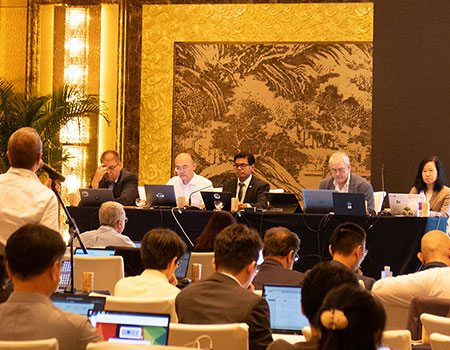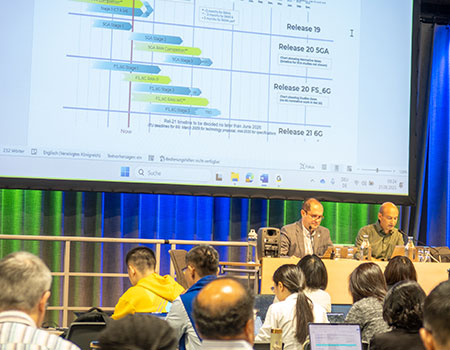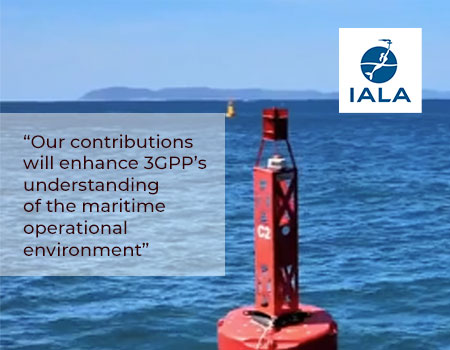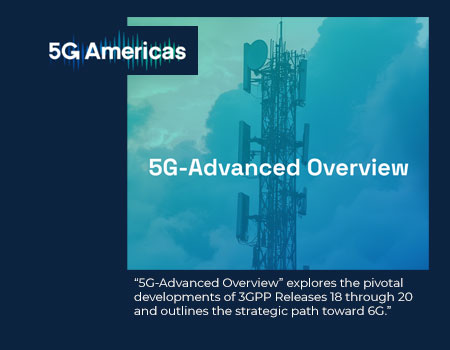3GPP 5G – Briefing for Evaluation Groups
October 27, 2018
This week’s 3GPP Workshop on 5G NR, hosted by the European Commission, has been a comprehensive briefing from the key experts in 3GPP for the benefit of the official Independent Evaluation Groups (IEGs), who’s job it will be to report to the International Telecommunications Union (ITU) on whether the 3GPP system for 5G meets the performance requirements (in ITU-R M.2412) for an IMT-2020 technology.
IMT stands for International Mobile Telecommunications, the term is used by the ITU to describe generations of radio interface standards for mobile systems. The latest member of the IMT family is IMT-2020 which calls for support for enhanced mobile broadband (eMBB) and for new ‘use cases’ that require massive machine-type communications (mMTC) and ultra-reliable and low latency communications (URLLC).
These objectives reflect perfectly 5G research project’s pre-standards work and also the priorities for 3GPP work from Release 15 onwards. It is a little bit of ‘chicken and egg’ in terms of which came first, but the alignment between IMT-2020, 5G R&D and the 3GPP work plan is an important achievement, which will help greatly at the World Radiocommunication Conference 2019, where deliberations on additional spectrum in support of IMT will take place.
In closing the 3GPP Workshop, Balazs Bertenyi concluded that - based on the results presented - there is a high level of confidence in the community that 3GPP’s submission to IMT-2020 will meet the ITU requirements. He asked all of the Independent Evaluation Groups to contact the 3GPP leadership and experts directly at any time in the process, to build on the dialogue started in Brussels this week.
The presentations below are provided for your information. They include the latest versions of the IMT-2020 submission templates and the latest 3GPP self evaluation results:
|
Timeline for IMT-2020 |
The process for IMT-2020, the timeline for its technology proponents, bringing in the concept of the IMT-2020 Independent Evaluation Groups. | 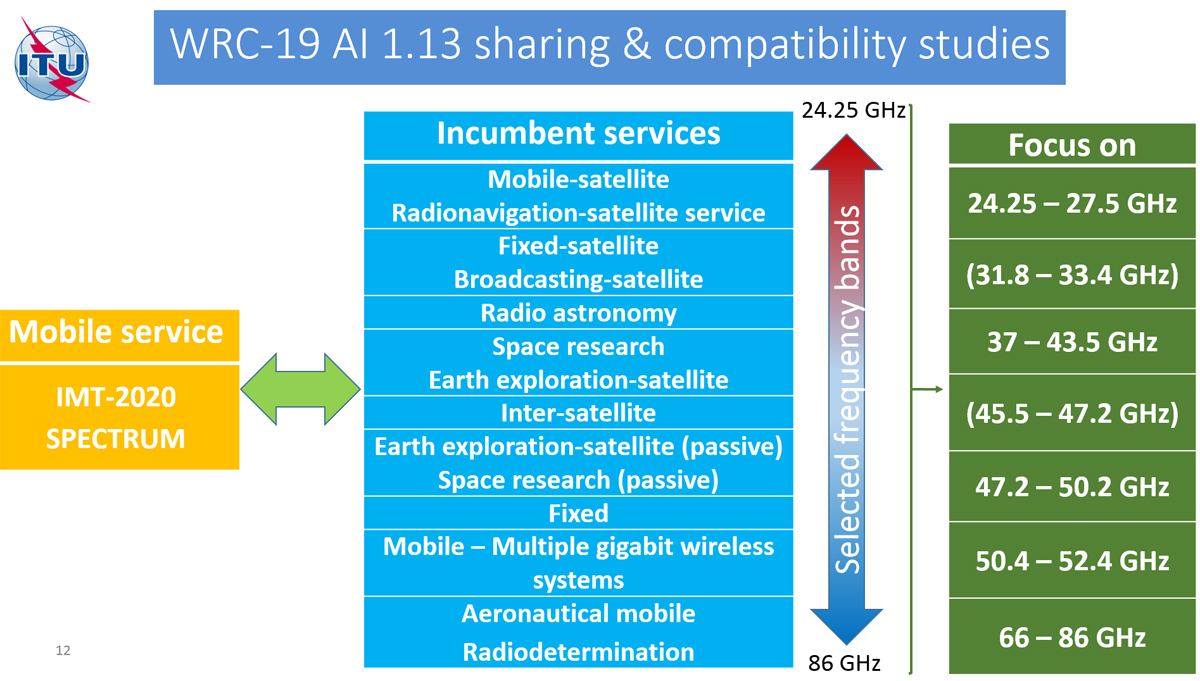 |
|
Explanation of 3GPP submission 3GPP TSG RAN ITU-R ad hoc convener, Giovanni Romano, Telecom Italia |
3GPP submission for IMT-2020 with an initial submission end of 2017, an updated submission in autumn 2018 and a final submission to ITU-R WP5D in summer 2019. | 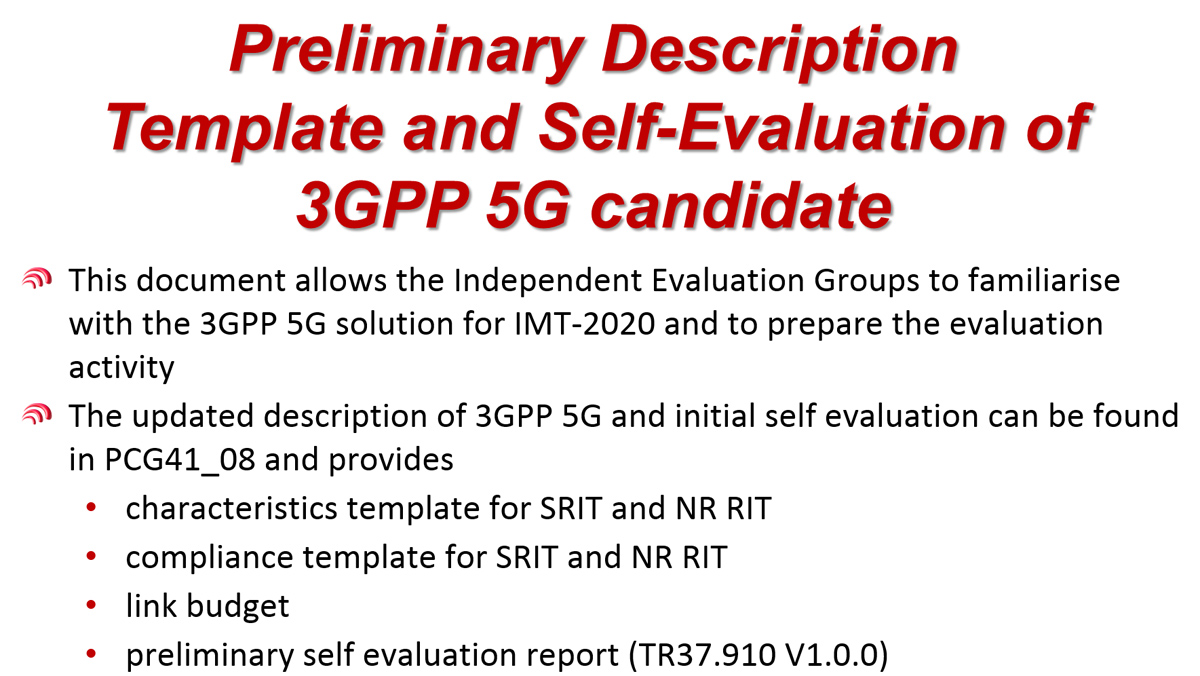 |
|
3GPP RAN 3GPP RAN Chairman, Balazs Bertenyi, Nokia |
Details of the NR Radio Interface Technology based on ITU requirements and based on commercial requirements identified in 3GPP. | 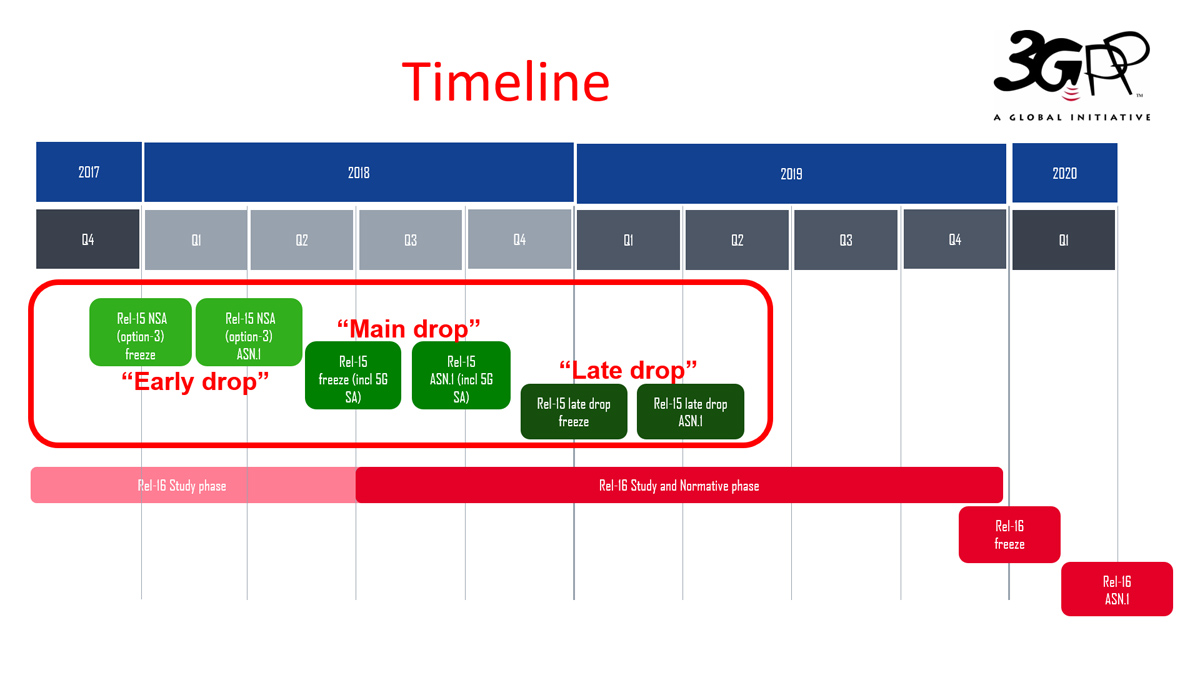 |
|
3GPP System and Core network aspects 3GPP TSG SA Chairman, Erik Guttman, Samsung |
5G Phase 1 and 2 from a system and service perspective, elaborating the key advances from the 4G System. | 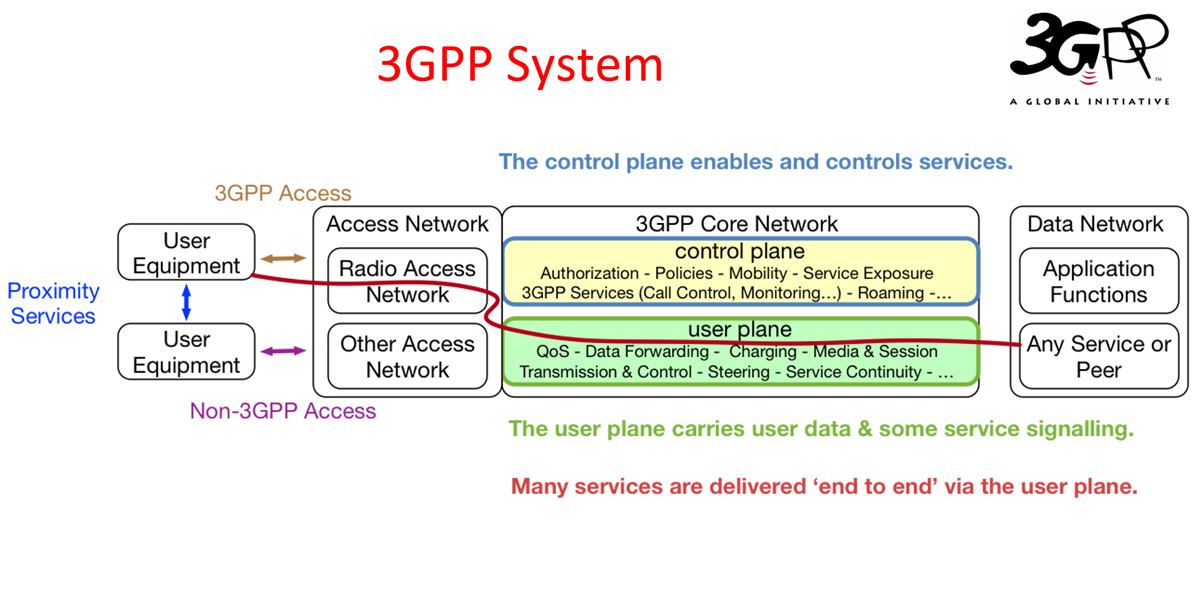 |
|
NR physical layer design, 3GPP TSG RAN WG1 Vice-Chairman, Havish Koorapaty, Ericsson |
The key features of NR that enable utilization of a wide range of spectrum and enable NR to serve a broad set of use cases are described. Physical layer aspects discussed include the frame structure, numerology, transport and control channel structure and procedures, and initial access signals, channels and protocols. | 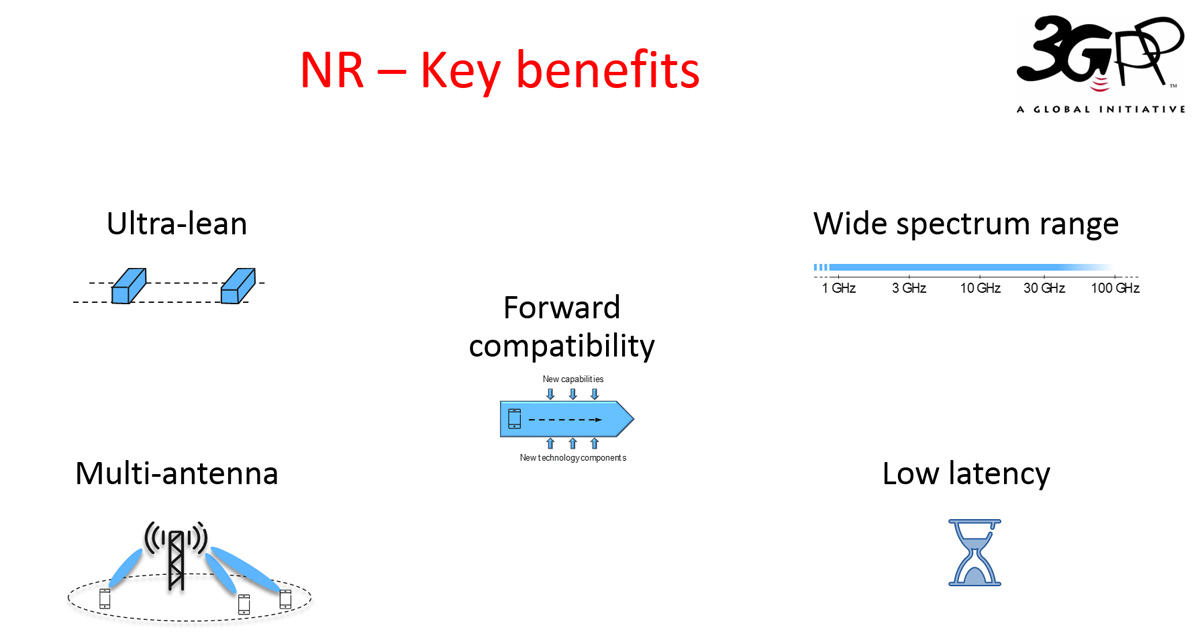 |
|
NR physical layer design: NR MIMO 3GPP TSG RAN WG1 Vice-Chairman, Younsun Kim, Samsung |
The multi-antenna specification features in Rel-15 NR, includes key NR-MIMO features such as uplink/downlink transmission schemes, multi-beam operation, and reference signal designs. | 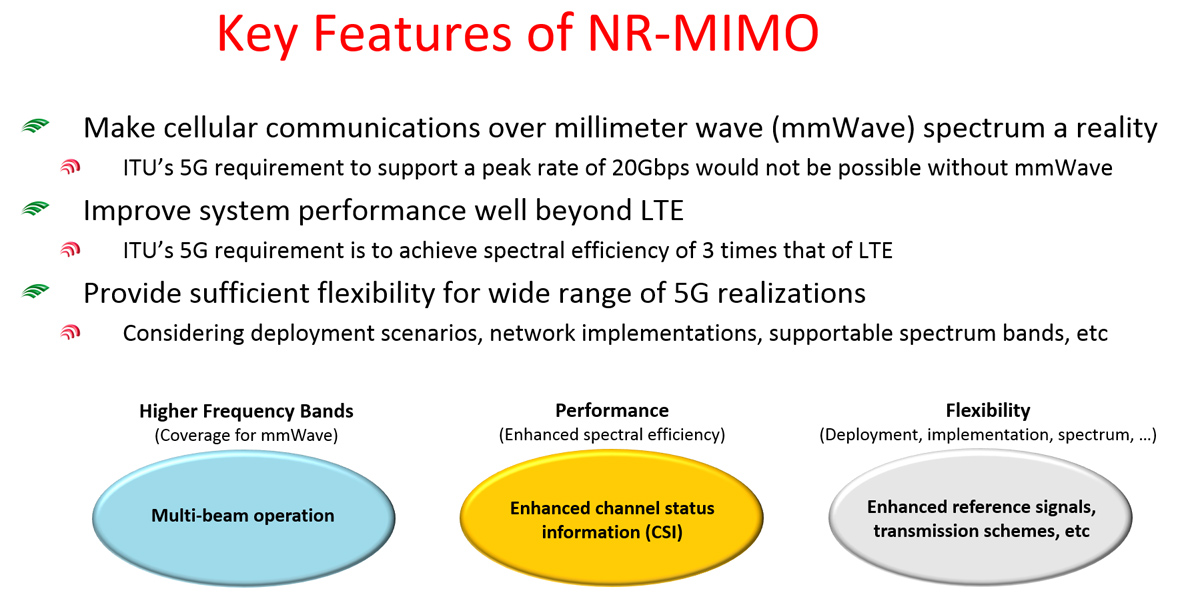 |
|
NR architecture 3GPP TSG RAN WG3 Chairman Gino Masini, Ericsson |
Introduces the overall architecture, migration path options, 5G base station architecture, and key network protocols. | 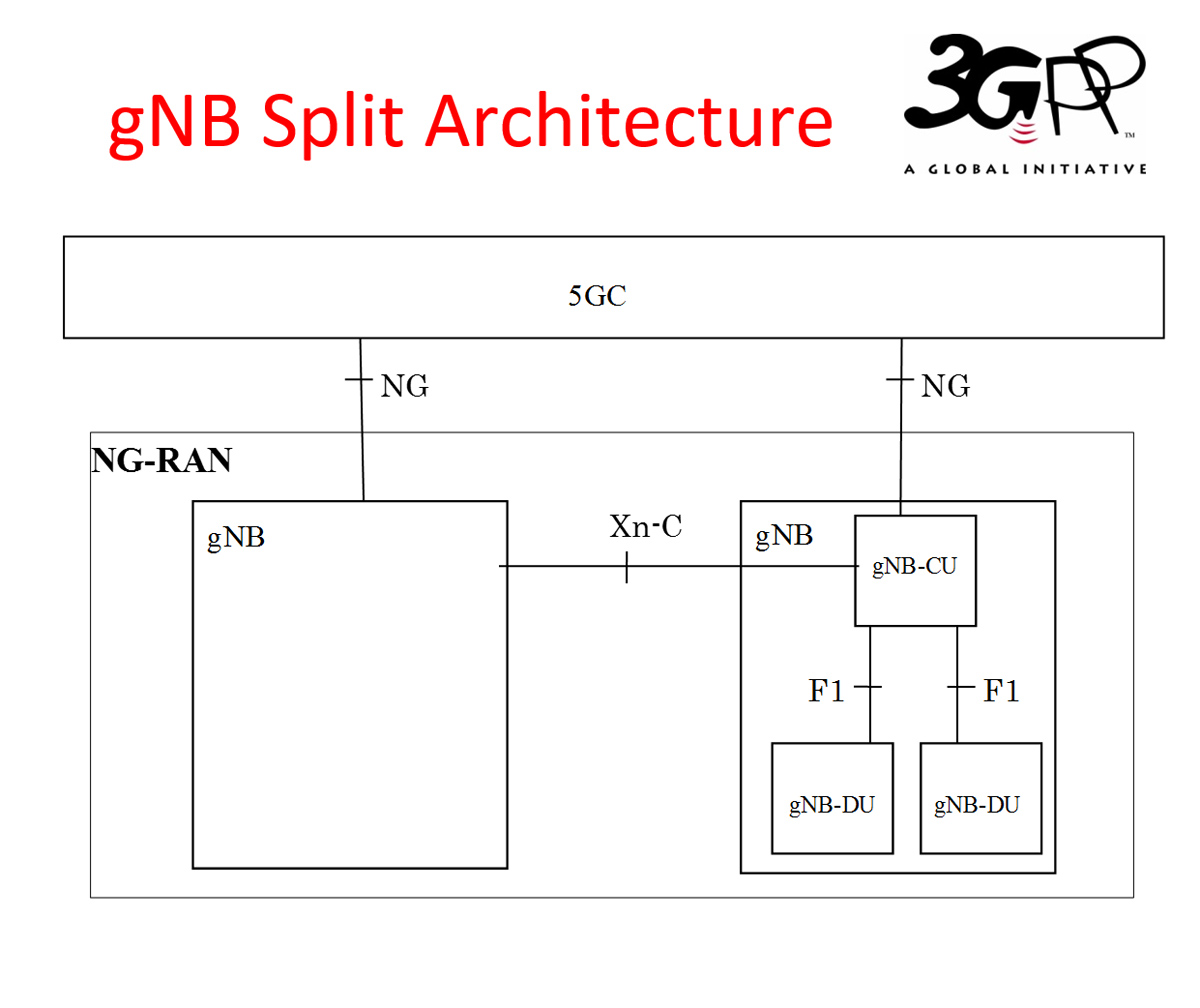 |
|
NR radio interface protocols Sudeep Palat, Intel |
NR radio interface architecture and protocols for control and user plane; covering RRC, SDAP, PDCP, RLC and MAC, focussing on differences and performance benefits compared to LTE. RRC states and state transitions with reduced transition delays are also discussed. | 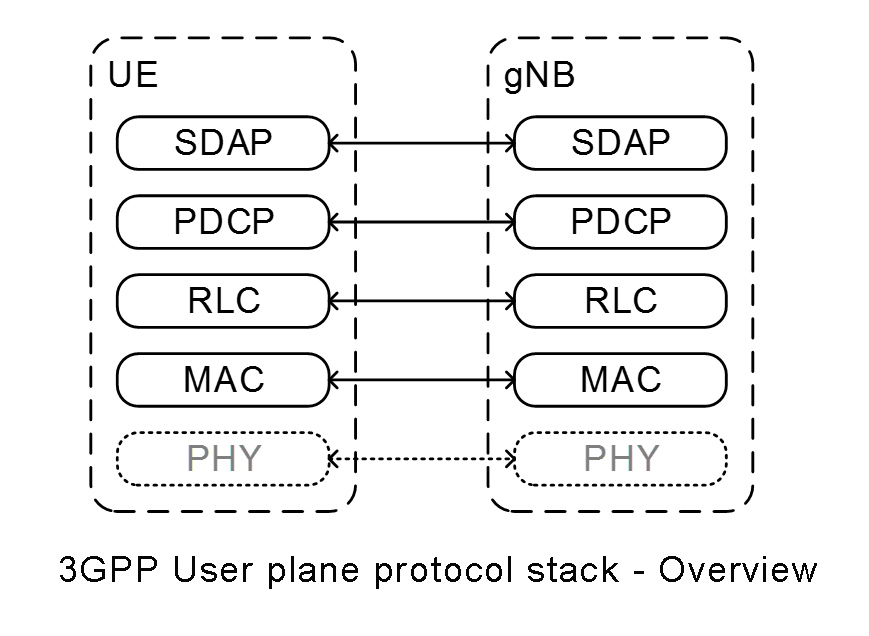 |
|
NR radio frequency and co-existence 3GPP TSG RAN WG4 Chairman, Xutao Zhou, Samsung |
In this presentation, frequency bands and general system parameters specified in RAN4 Rel-15 specification are introduced. Furthermore, UE and BS RF requirements related to sharing and co-existence performance including output power, unwanted emission, sensitivity and blocking are presented. | 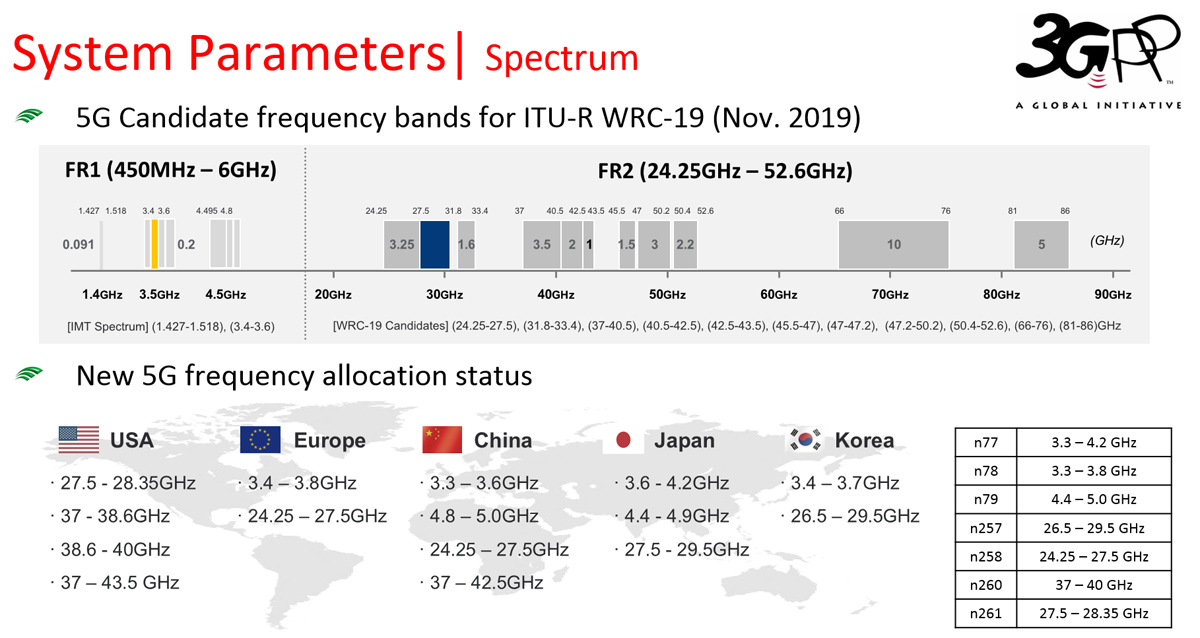 |
|
3GPP’s Low-Power Wide-Area IoT Solutions: NB-IoT and eMTC Matthew Webb, Huawei |
Explains the four main targets of low device complexity, extended coverage, long battery life, and massive connection density that were used in the design of both technologies, and the solutions that were introduced to meet them. | 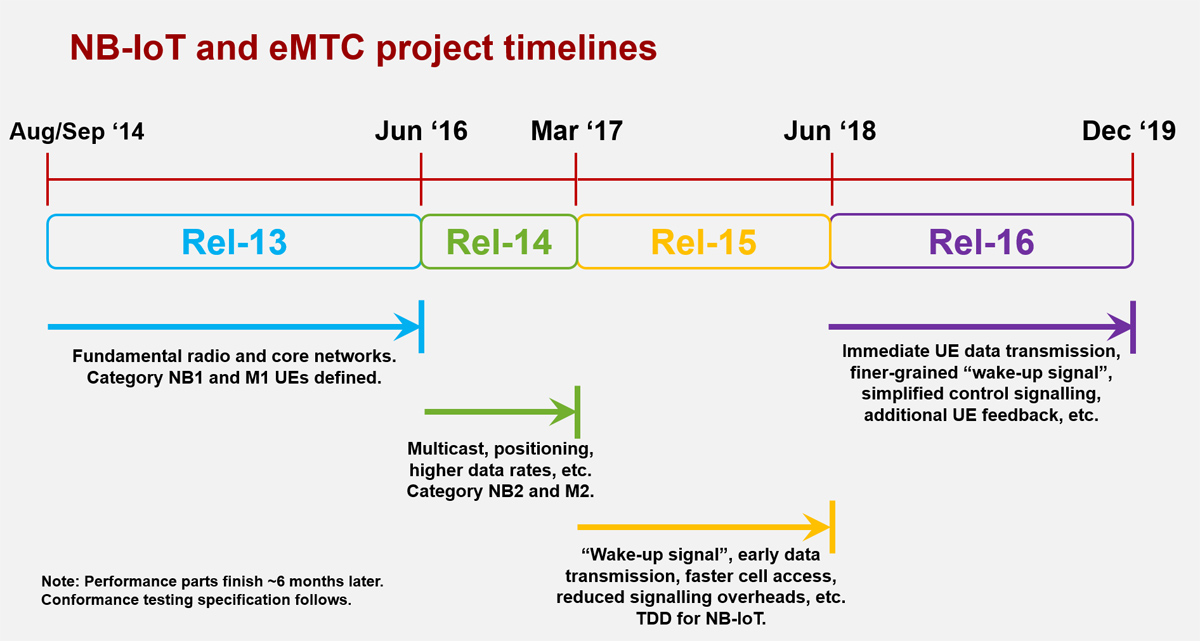 |
|
LTE evolution Asbjörn Grövlen, Ericsson |
The technical features introduced in LTE since the 3GPP submission to IMT-Advanced. | 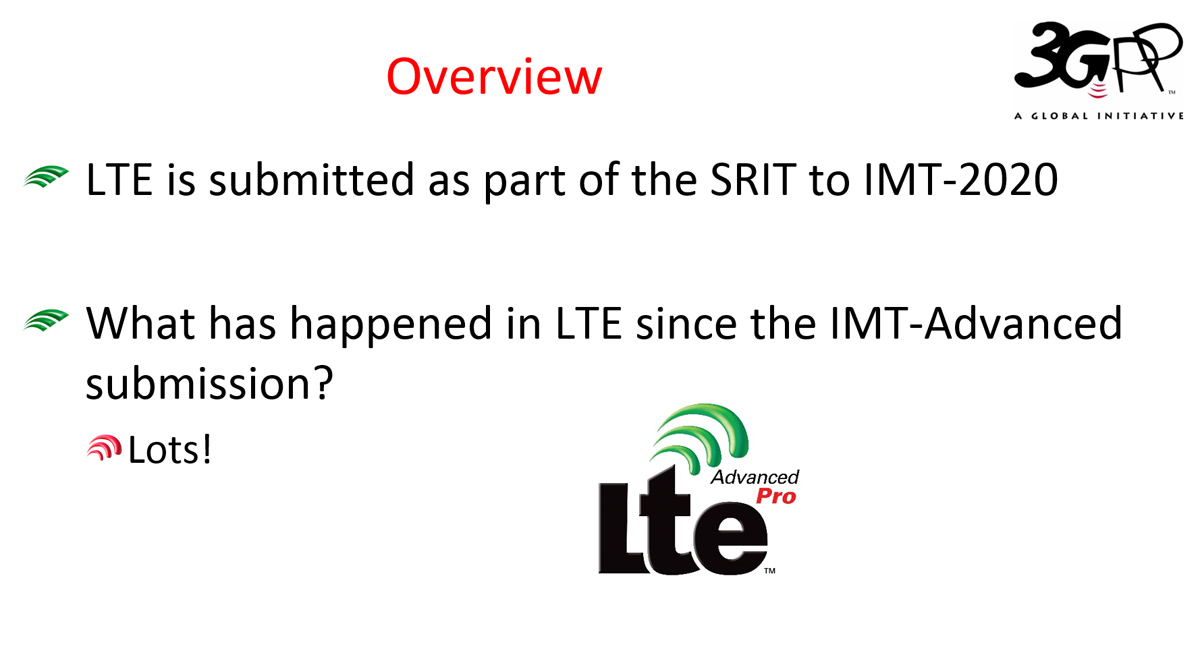 |
|
IMT-2020 submission templates: Overview of 3GPP submission and compliance to IMT-2020 requirements Yong Wu, Huawei |
Includes the introduction of 3GPP 5G SRIT and RIT submission, the submission templates as well as self evaluation report. The assessment results of compliance to IMT-2020 requirements are provided. |
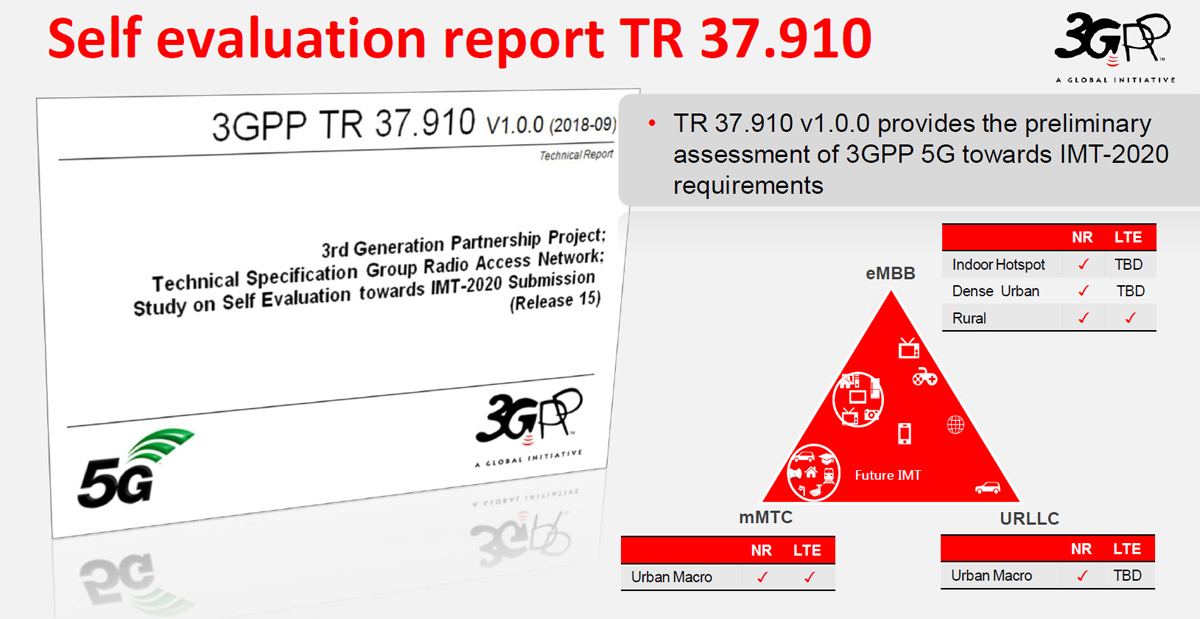 |
|
IMT-2020 submission templates: Description characteristics template Kazuaki Takeda, NTT DOCOMO |
Overview of characteristics for SRIT and RIT of 5G, describes new and key functionalities of NR and LTE for SRIT and RIT which are the basis for ITU evaluations. |  |
|
IMT-2020 submission templates: Link budget template Asbjörn Grövlen, Ericsson |
Presentation and explanation of the link budget template for the IMT-2020 submission, including the guideline from ITU and the assumptions made in 3GPP. Example link budgets for both NR and LTE are presented for control and data channels in UL and DL. | 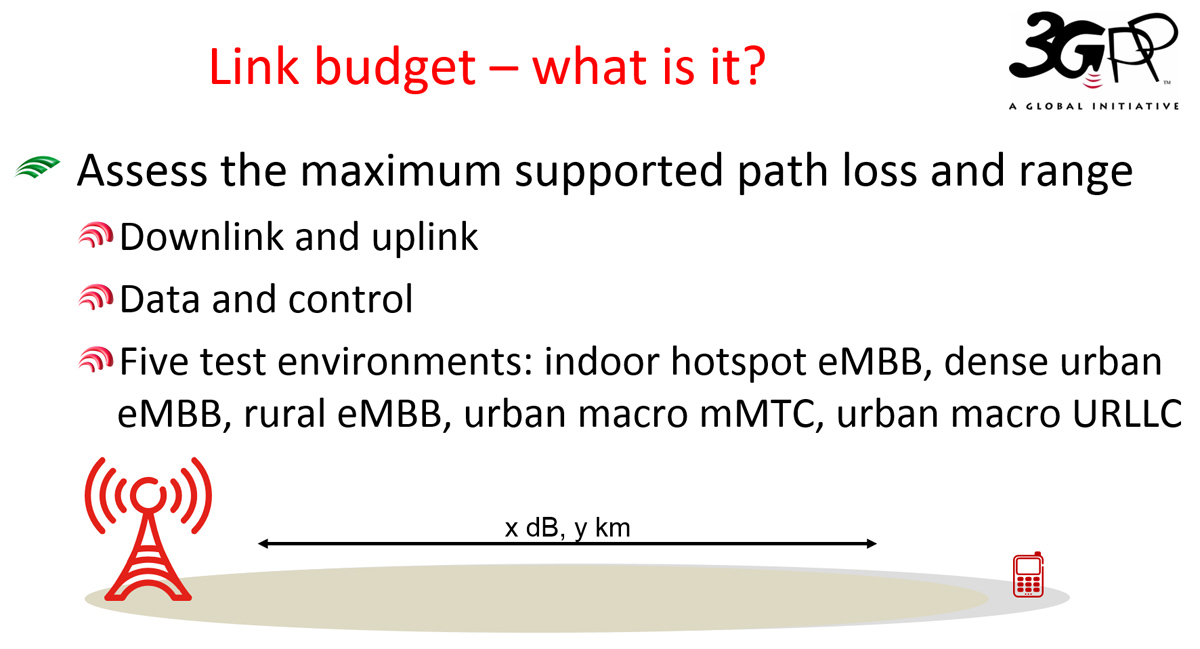 |
| Self-Evaluation: Calibration method and results RWS-180017 Francesco Pica, Qualcomm |
Initial simulations calibration (first phase of the IMT-2020 self-evaluation study), including background/references, results and conclusions/observations. | 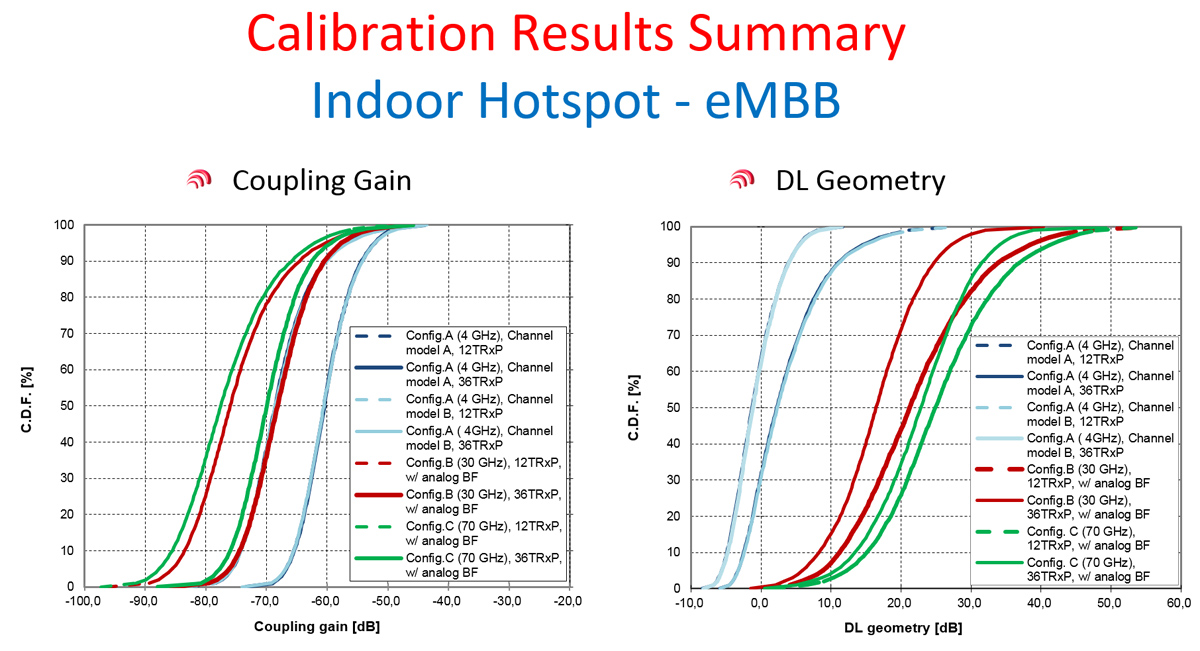 |
| Self-Evaluation: eMBB evaluation results RWS-180018 Yong Wu , Huawei |
Preliminary self evaluation against the eMBB technical performance requirements are provided, including the evaluated features, detailed evaluation method and configurations. The evaluation will demonstrate how 3GPP 5G could fulfill and extend the capability of IMT-2020 on eMBB applications. | 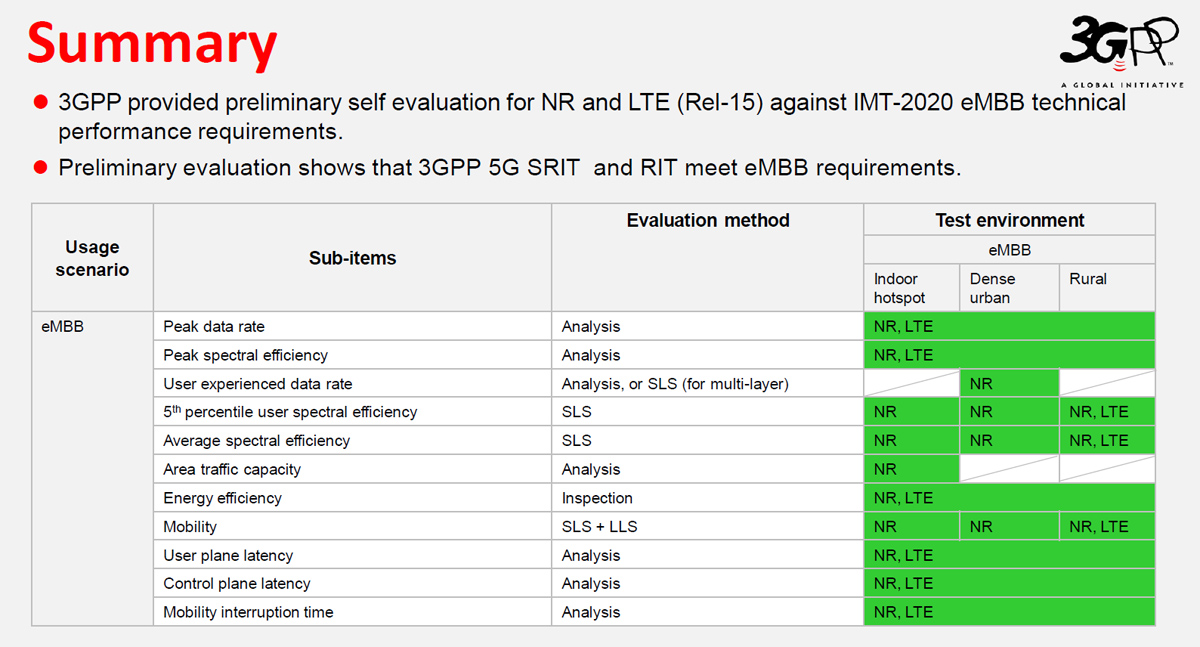 |
|
Self-Evaluation: URLLC and mMTC evaluation results Karri Ranta-Aho, Nokia |
Summarizes the 3GPP self evaluation provided to the ITU-R as part of the 3GPP initial submission towards IMT-2020, demonstrating how the 3GPP submission fulfills these IMT-2020 requirements. | 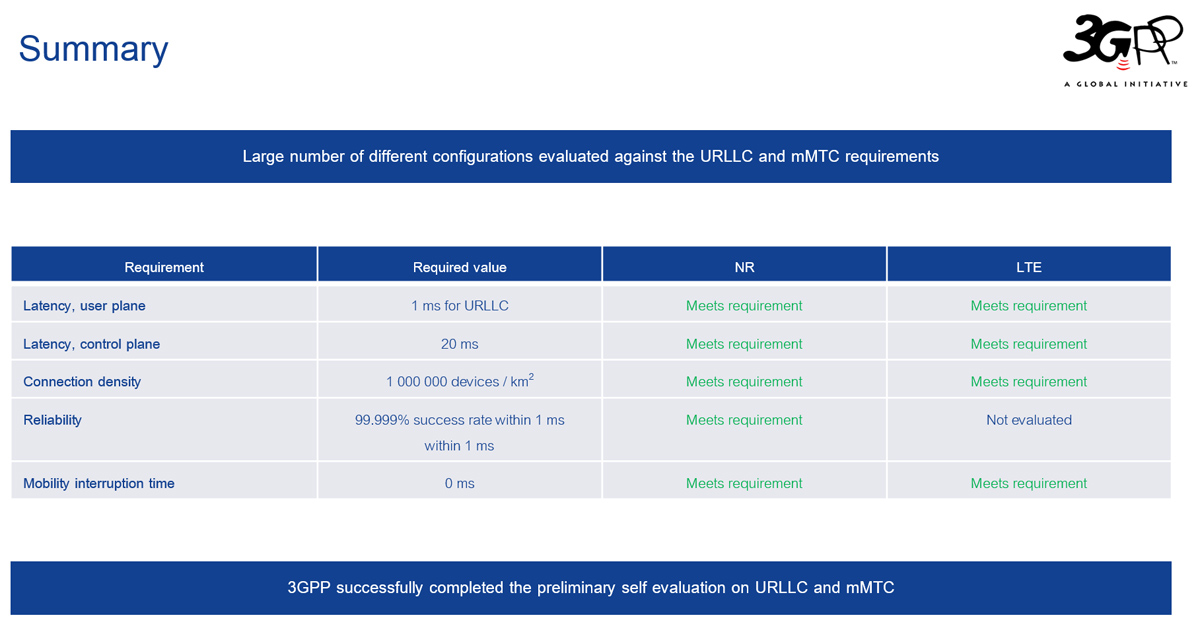 |
|
The final IMT-2020 submission: Rel-16 outlook - RAN aspects 3GPP TSG RAN Chairman, Balazs Bertenyi, Nokia |
After the initial 5G specification release of Release-15 3GPP is continuing the evolution of the 5G NR technology both towards better serving emerging verticals as well as better serving commercial operators. This presentation shows the specific features planned for 3GPP Release-16 with respect to 5G NR. |
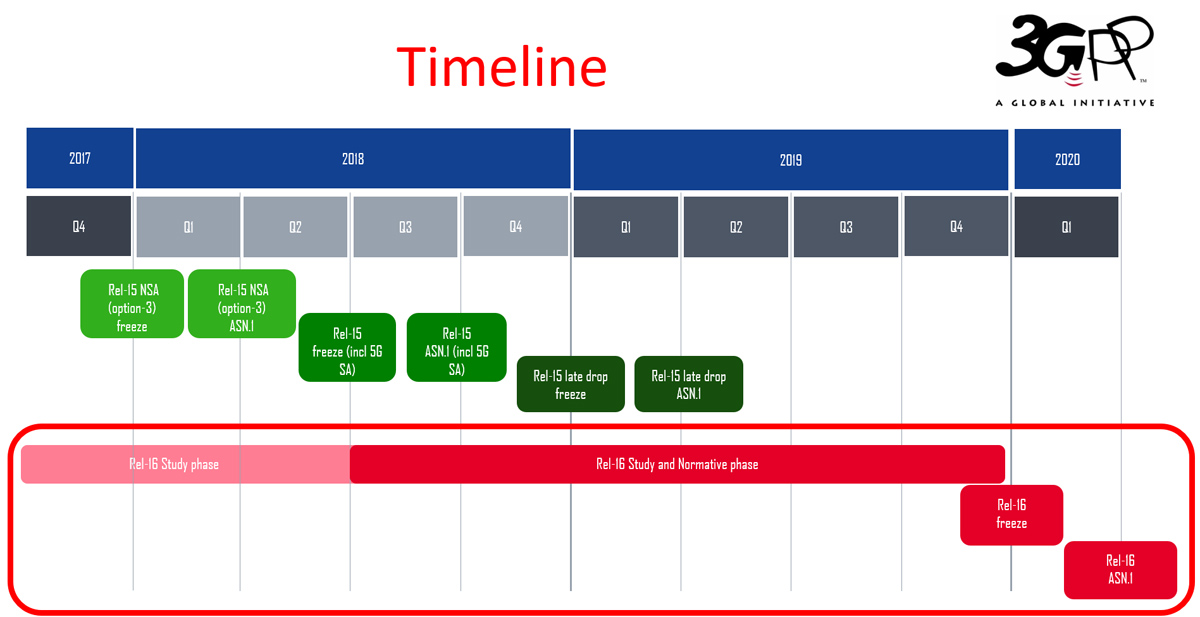 |
|
The final IMT-2020 submission: Rel-16 outlook - System and Core network aspects 3GPP TSG SA Chairman, Erik Guttman, Samsung |
Overview of some of the most significant non-RAN specifications in Release 15 and studies in Release 16. | 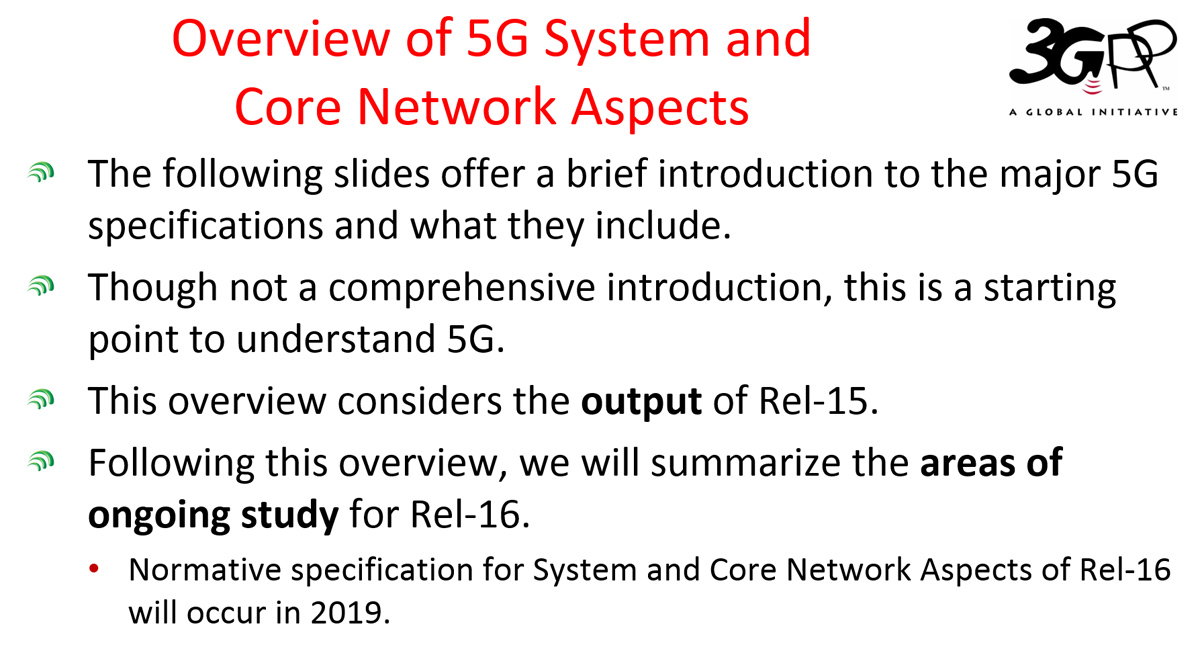 |
Contact for this article: Kevin FLYNN, Marketing and Communications Officer, 3GPP


 3GPP News
3GPP News
